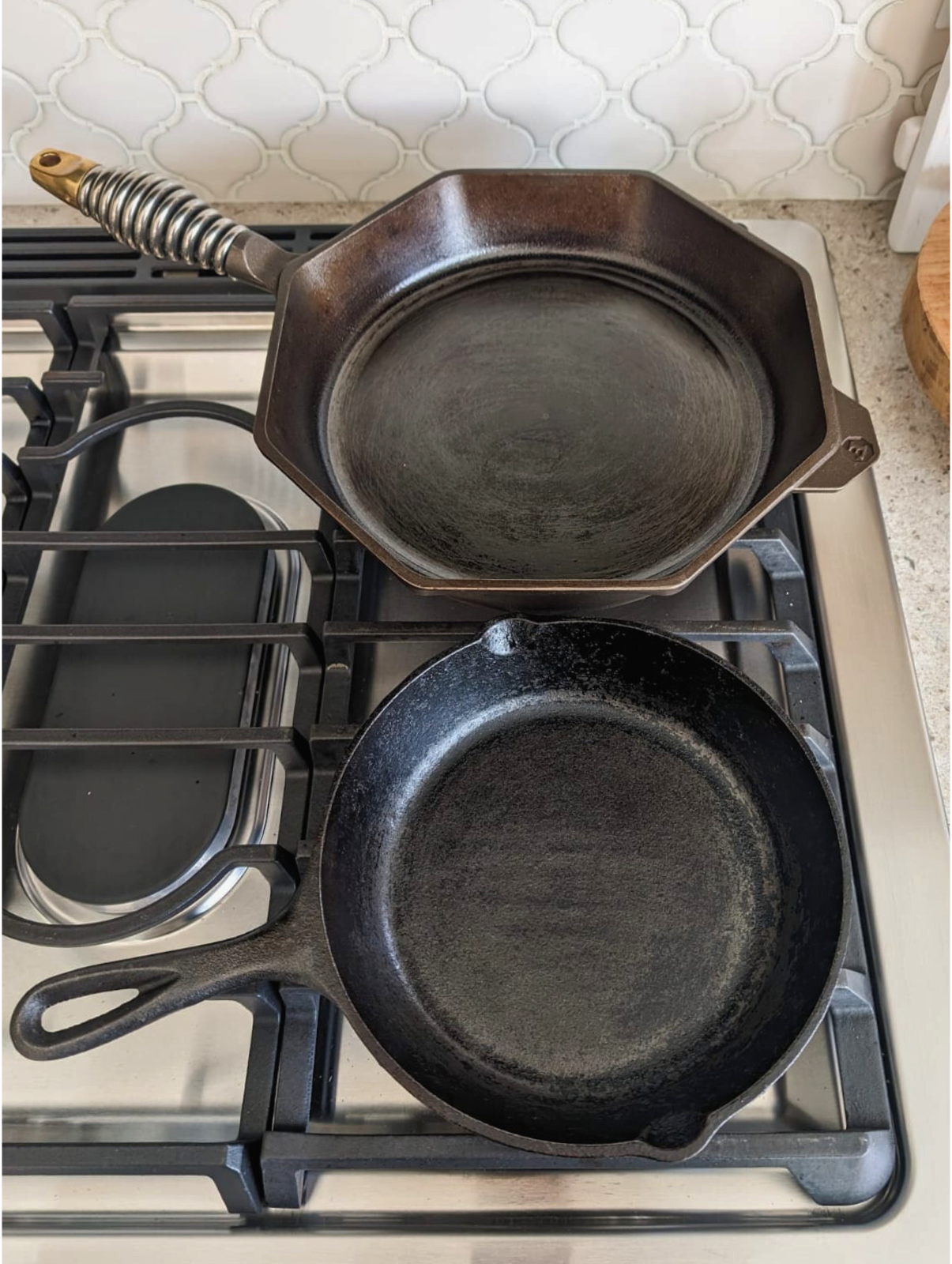Cast Iron is a great option if you’re looking for new cookware. It cooks evenly and can be used in the oven or out on the grill to sear and keep the smoke outside. You also don’t have to worry about metal utensils or being rough on it during cleanup since it doesn’t have a non-stick coating like Teflon that can be damaged. See some quick tips below if you’re looking to make the switch!
Cooking with Cast Iron
Use low to medium heat – you’ll notice that a cast iron pan will generally be hotter than your other cookware on the stop top. Rarely will you need to go to high heat unless you’re searing items like finishing a steak.
Preheat your pan before adding food to ensure even cooking. The trick is to let it heat up until water sizzles when a few drops are added to the pan – then you’re ready to add oil and start cooking. I prefer grape seed for its high smoke point and neutral flavor profile.
Note: Avoid cooking acidic foods like tomatoes or vinegar-based sauces for prolonged periods, as they can strip the seasoning. If you’re making a big pot of tomato sauce or chili for hours you’ll need to re-season and it’s best to use your other stock pots for that. This is about the only caveat to cooking with cast iron I’ve encountered.
Cleaning Your Cast Iron

Wait until the pan cools down a bit before cleaning and you generally can rinse the pan out in the sink with hot water and a soft sponge to gently scrub away any food residue. You can use dish soap as needed as modern soaps won’t strip off seasoning.
If necessary, use a small amount of coarse salt as a mild abrasive to help remove stuck-on bits. But I prefer to use a chainmail sponge. One of the benefits of cast iron is not having to worry much about a non-stick coating being scratched if you do burn some food on accidentally. A quick scrub with this pad will take off anything and not harm the pan.
Dry the pan immediately with a towel or by placing it on the stove over low heat. Apply a thin layer of oil to the pan while it’s still warm on the stovetop to maintain the seasoning and be ready to cook next time.
Seasoning Your Cast Iron
Many come pre-seasoned like the Finex 12 inch pan pictured at the top of this post or the 8 inch pan from Lodge below it. Seasoning is the process of creating a natural, non-stick coating on your cast iron pan and it’s easy to keep improving as you cook. If you do need to season a pan again use the easy steps below in the oven.
- Preheat your oven to 450°F
- Wash your cast iron pan with warm, soapy water and a sponge. Avoid steel wool, as they can damage the seasoning.
- Dry your pan thoroughly with a clean towel or by heating it on the stove over low heat.
- Apply a thin layer of cooking oil (vegetable oil, flaxseed oil, or my favorite grape seed oil works well) to the entire surface of the pan, including the outside and handle. You want to keep the layer of oil very light so it cooks off – too thick and it will leave a sticky layer.
- Place the pan upside down on the middle rack of your preheated oven. Put a sheet of aluminum foil on the rack below to catch any drips.
- Bake the pan for 1 hour. Then turn off the oven and let the pan cool completely inside before removing it. Your cast iron is now seasoned and ready to use!
Dishwasher Use
Avoid placing your cast iron pan in the dishwasher. The harsh detergents and high temperatures can strip away the seasoning and promote rusting.
Hand washing with warm water and minimal soap is the best way to clean your cast iron while preserving its seasoning and longevity.
By following these simple steps, you can enjoy the benefits of cooking with cast iron for years to come, with easy cleanup and virtually indestructible performance. Happy cooking!

